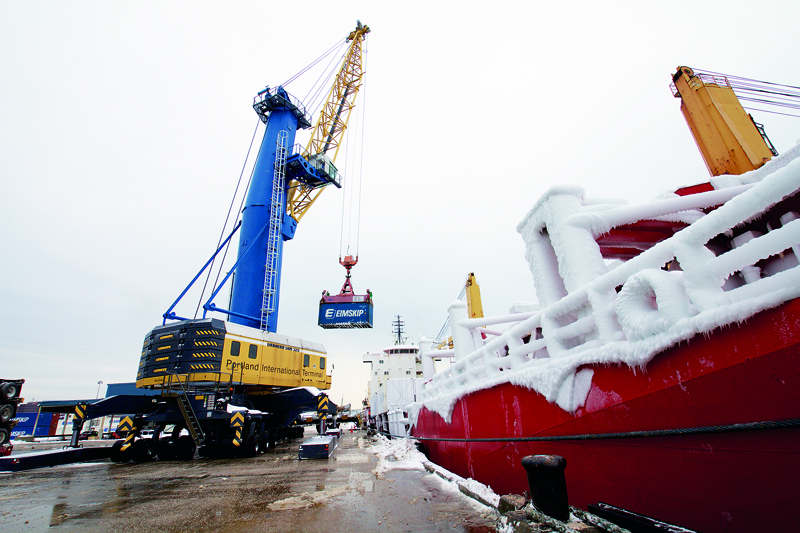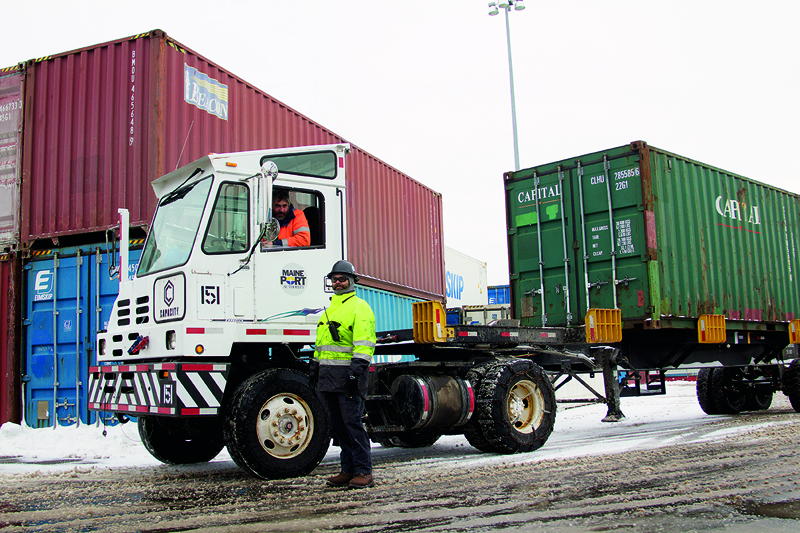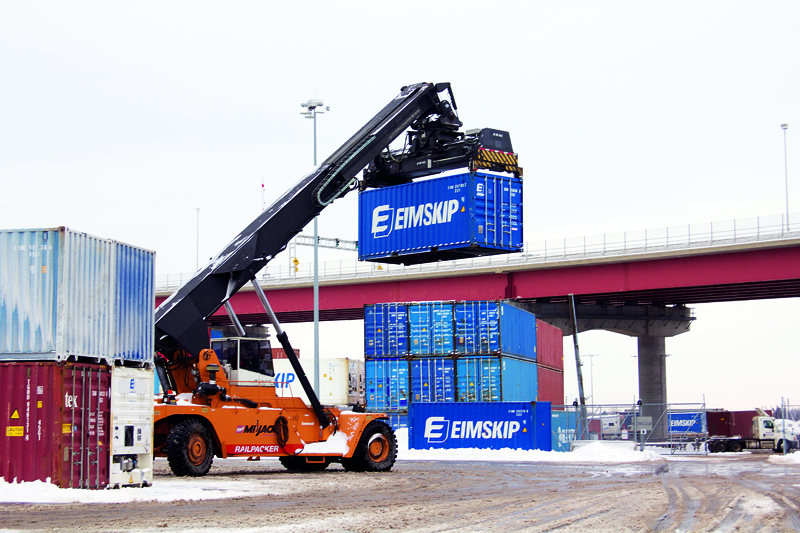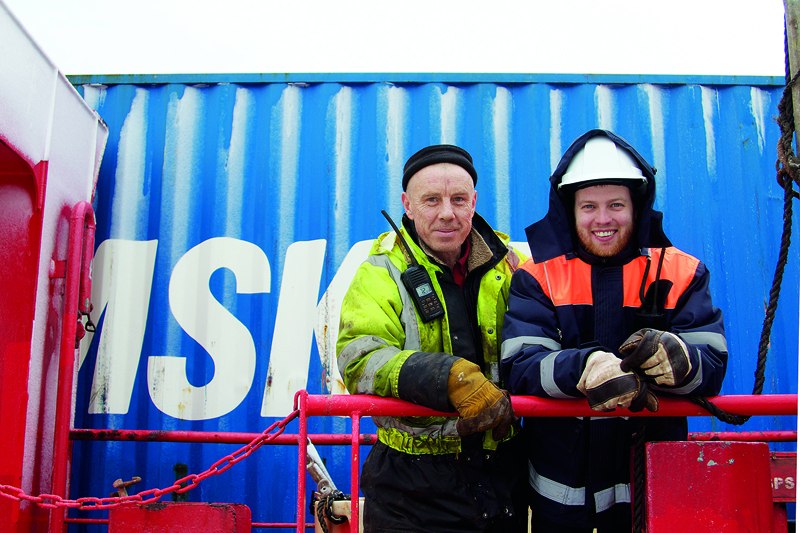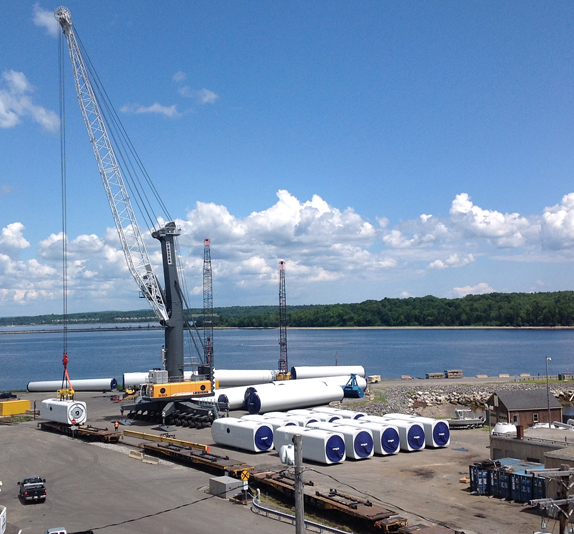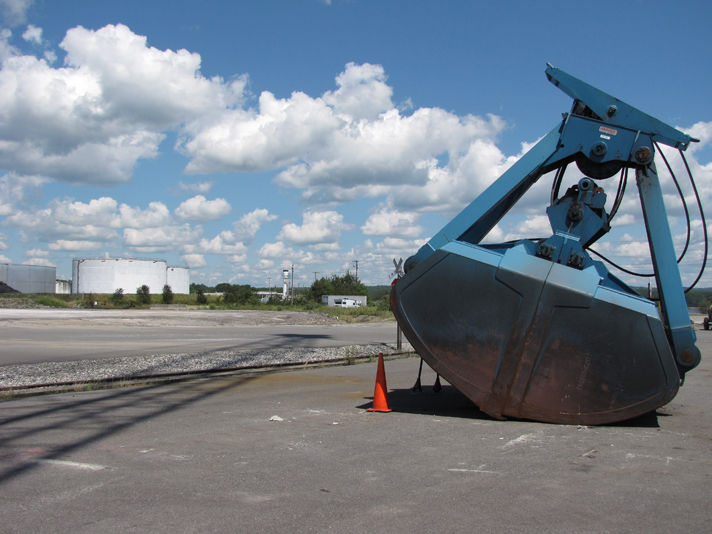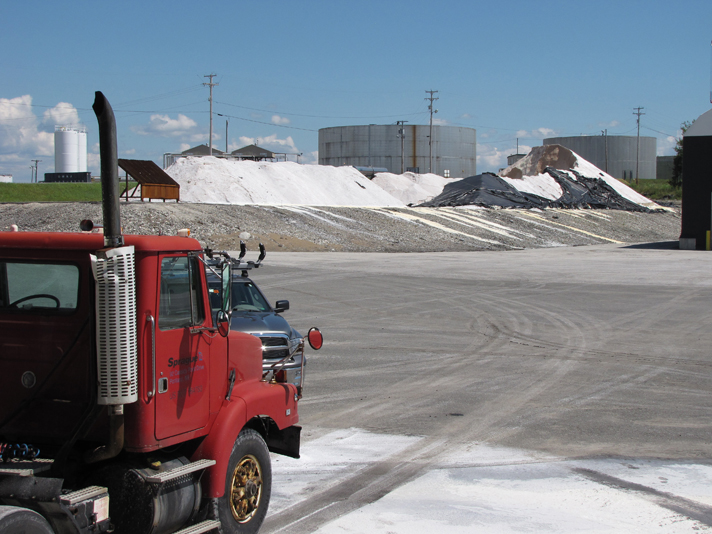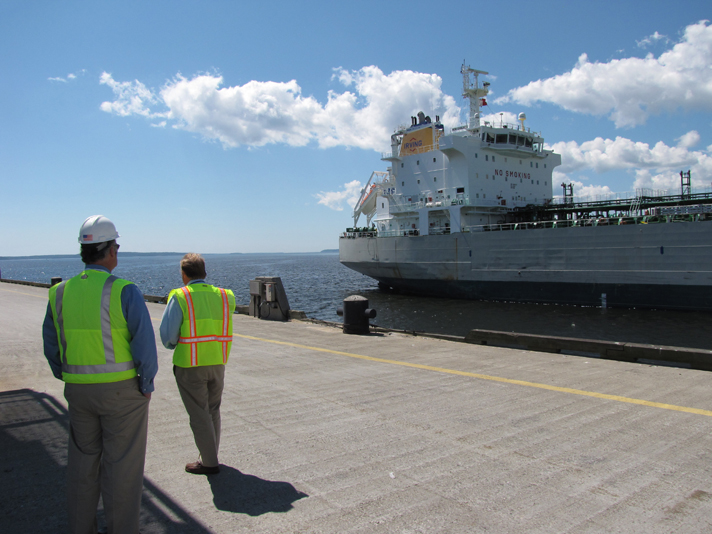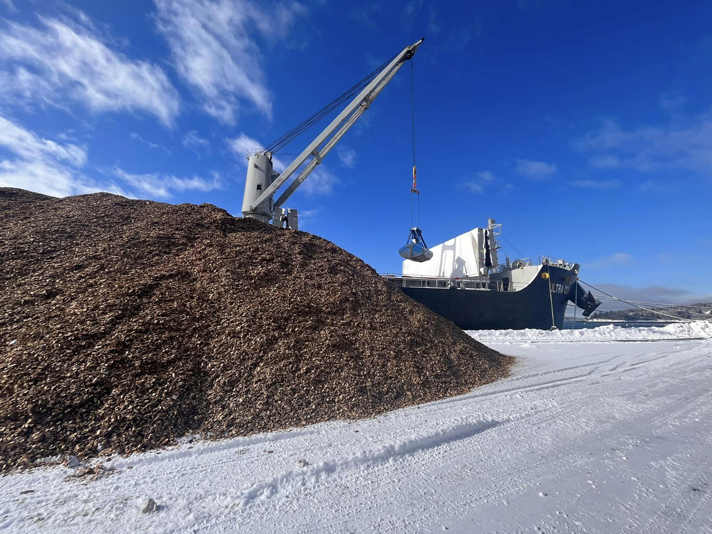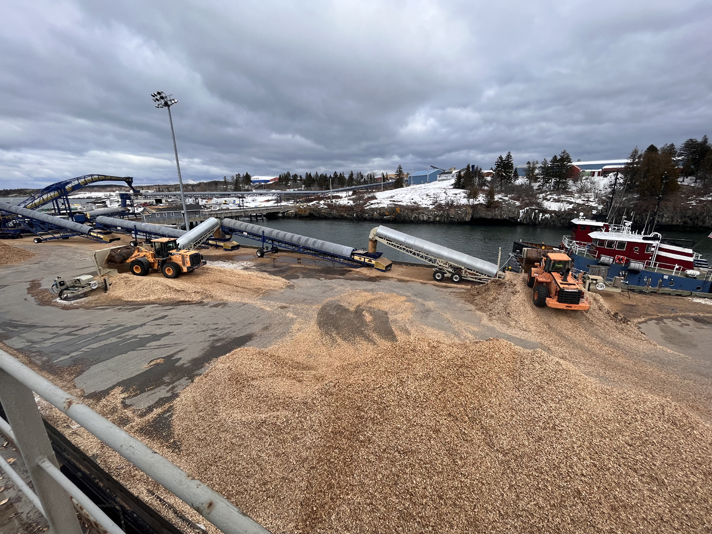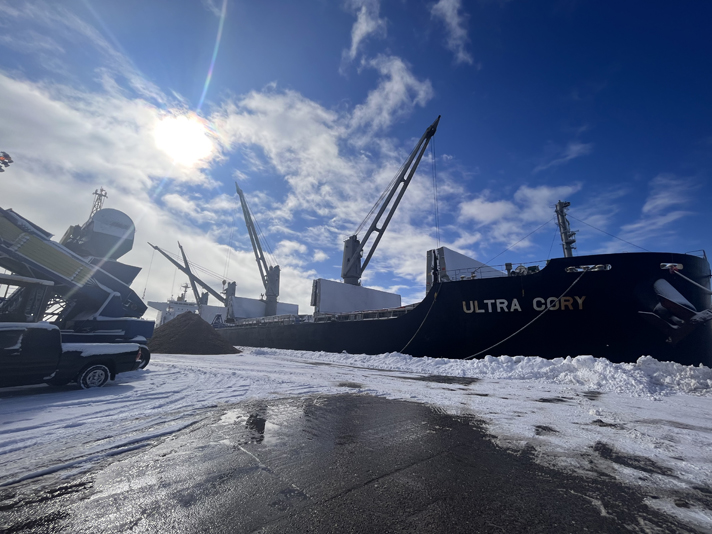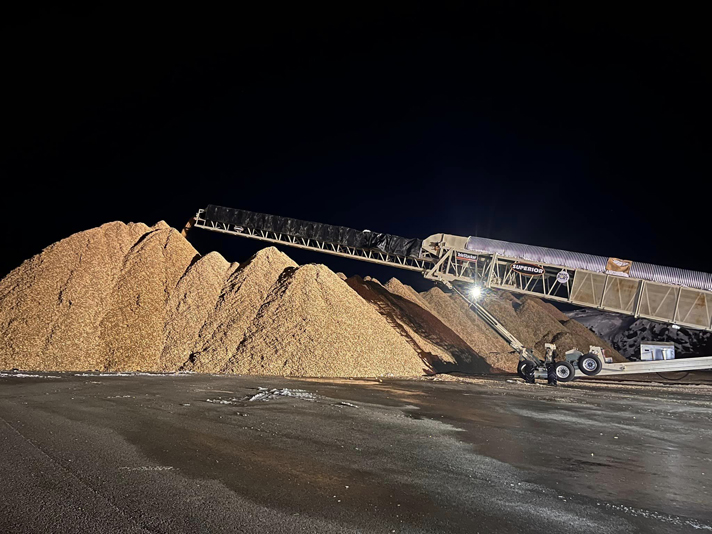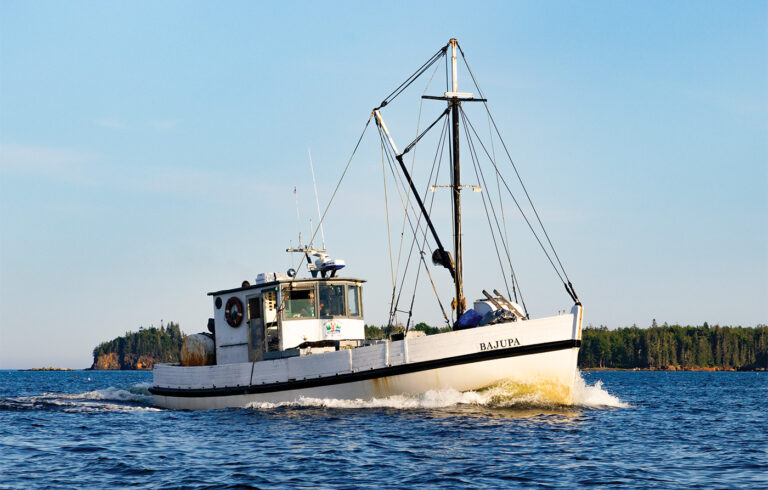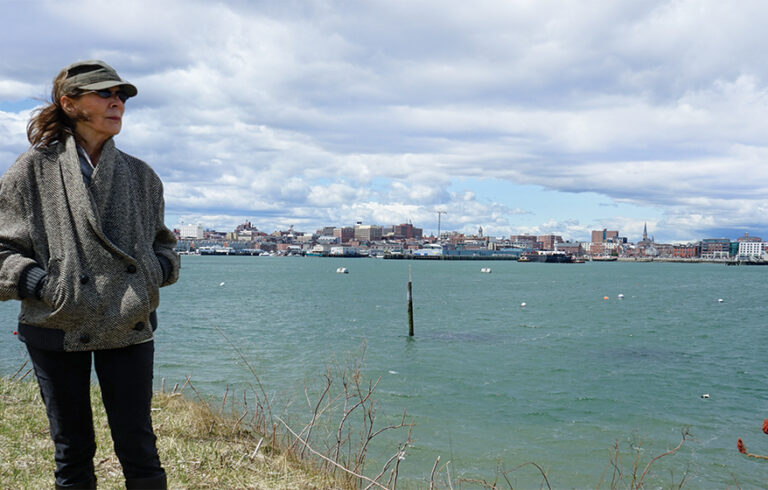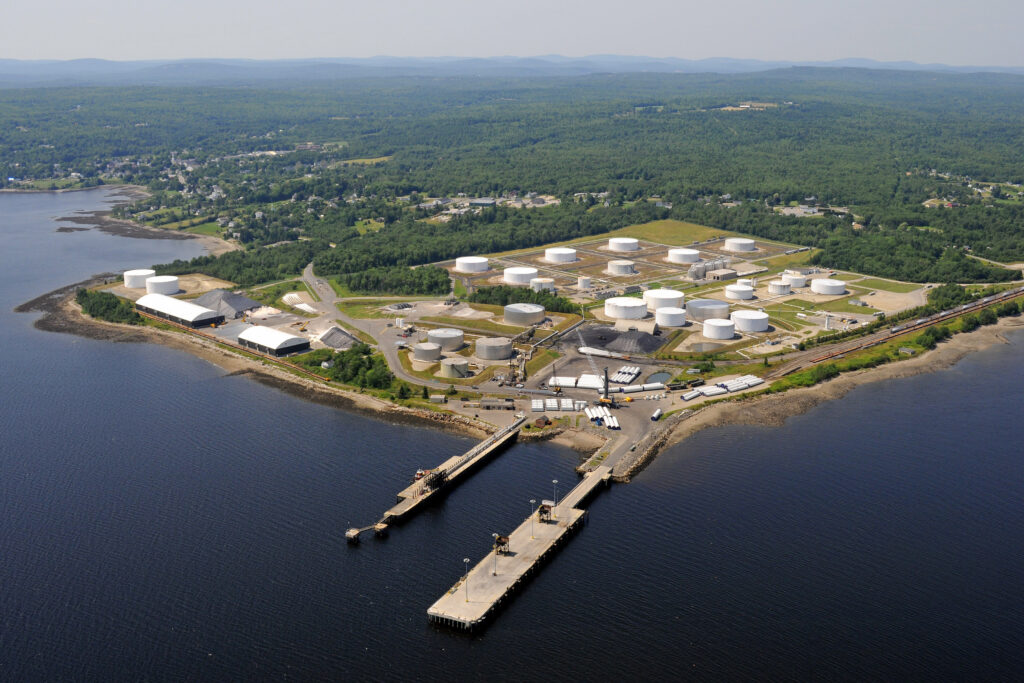
Maine has a long and celebrated history of shipping by sea. It’s ingrained in our history, culture, and economy. Through the centuries, ships have transported granite, lumber, ice, shoes, canned sardines, and numerous other products from Maine to markets in the U.S. and around the globe. They’ve brought cargo to Maine as diverse as coal, cotton for our mills, guano for fertilizer, and even molasses for rum distilleries.
While the product mix has changed, Maine continues to import and export products by sea, primarily through the deep-water ports of Portland, Searsport, and Eastport, thanks to the state’s Three-Port Strategy implemented in the late 1970s. Through the Department of Transportation, the strategy aims to promote cargo port development in those three ports while preserving Maine’s other coastal resources for less industrial uses, such as commercial fishing, the state’s windjammer fleet, and recreational boating. The fortunes of the three ports have ebbed and flowed depending on market conditions, technology, business relationships, and other variables. For now, Portland’s shipping business is running on all cylinders, Searsport is steady, and Eastport is in a slump.
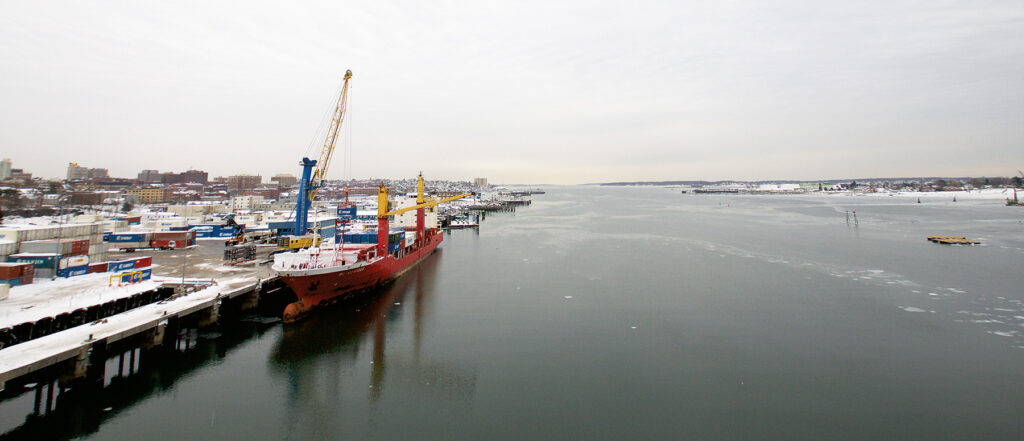
Portland—Humming Along
Portland’s success as a cargo port can be boiled down to one word: Eimskip (pronounced AIM-skip).
The Icelandic shipping company made Portland its U.S. port of call in 2013, transforming the harbor into a freight shipping hub that connected it to markets in Iceland, Europe, and beyond. The service created a stable supply chain for Maine manufacturers shipping goods overseas, and for companies importing products.
Since then, Eimskip’s shipments through the port have grown more than 20% a year. About 44,000 shipping containers crossed the dock in Portland in 2022, up from 7,000 a decade ago.
The value of the imported cargo— frozen seafood is by far the No. 1 import—on Eimskip ships was on track to top $1 billion in 2022, up from $157 million in 2013. Exports were projected to grow to more than $800 million, from under $36 million a decade ago.
“You could say Portland has been the pinnacle of success in the 40 years of the Three Port Strategy,” says Matt Burns, executive director of the Maine Port Authority, which owns the International Marine Terminal in Portland Harbor, where Eimskip’s ships operate.
A big challenge ahead is space— where to put those added shipping containers as the service grows? But growth is likely with the construction of a 107,000-square-foot cold storage warehouse on the Portland waterfront for seafood, agricultural products, biopharmaceuticals, and other things that require refrigeration before being shipped not only in cargo ships, but also by rail or truck.
When the facility opens in 2024, it will open up new business opportunities to ship products to “a hungry market” in Europe, says Bill Needelman, the city of Portland’s waterfront coordinator. “I think we’ve only scratched the surface,” he says.
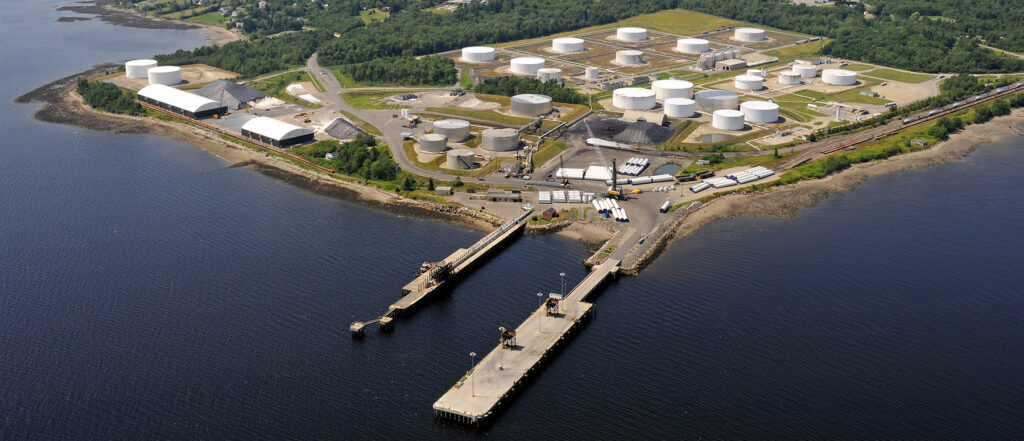
Searsport—future offshore wind hub?
Searsport is best known for petroleum products that are brought to port. Future growth, however, may be tied to wind.
In recent years, more than five million barrels of petroleum products and more than 500,000 tons of other products, such as salt, coal, slurry, and scrap metal have passed through Searsport’s Mack Point terminal each year. James Gillway, the longtime Searsport town manager, says the terminal has evolved through the decades and remains busy.
“Shipping in general is one of the most economical ways to move anything, and I don’t think it’s going away anytime soon,” he says.
The port could undergo major changes in the years ahead as a staging area for deep-water wind turbines in the Gulf of Maine. As Maine anticipates the development of offshore wind, the state is looking at two possible sites in Searsport— Mack Point and nearby Sears Island, which is undeveloped— where the floating foundations of the wind turbines would be manufactured and assembled before being taken by boat 24 miles out to sea where they would generate power.
The facility would require roughly 100 acres to build huge turbines that tower 800 feet high above the water. “This is the big kahuna in the world of Maine ports,” Burns says.
The port has some challenges. For one, the harbor channel needs to be dredged, which now causes ships to come in not fully loaded or having to time their arrivals and departures with the tides.
While offshore wind offers an opportunity for future growth at the port, Gillway says an existing rail line that connects Searsport to westward markets also offers prospects. Cargo unloaded in Searsport can be delivered in three to four days on a single rail line to the middle of the country. “There’s still a lot of potential,” he says.
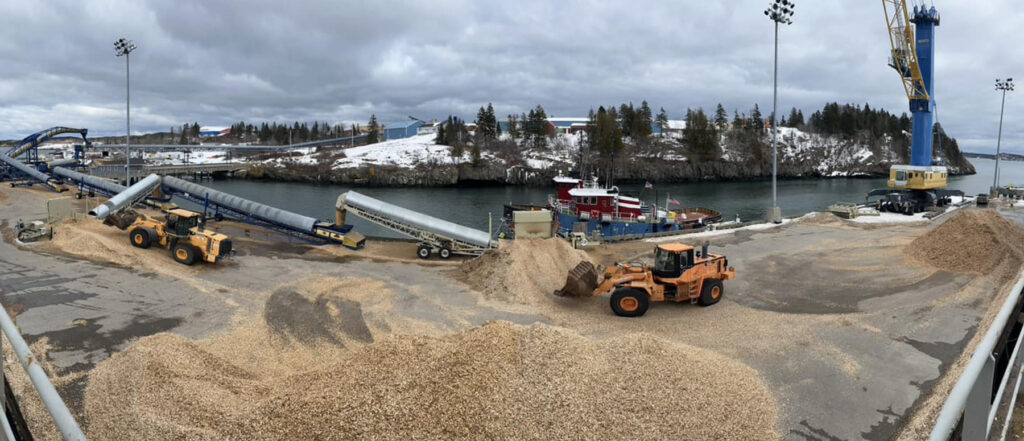
EASTPORT—Looking for Business
Eastport has the deepest navigation channel of any seaport in the continental United States. What it doesn’t have is cargo ships.
For the past two years, a single cargo ship has stopped in Eastport, bringing in wood chips. Chris Gardner, the longtime port director who recently stepped down after 16 years on the job, said cargo shipping came to a halt due to the challenges brought on by the pandemic and supply chain snarls that were felt worldwide. “We haven’t been immune to that,” Gardner says.
Since Eastport launched its cargo operations in 1981, the backbone of cargo shipments has been pulp product exports from the Woodland Pulp Mill, 38 miles to the north in Baileyville. Through the years, it has also seen logs, rolled paper, cattle, heavy equipment, and other products pass through for export, with road salt, huge wind turbine blades, and other assorted cargo imported through the port.
Eastport has it challenges—the port hasn’t had rail service for more than 40 years, and there’s only one road in and out—but Gardner thinks it could be ripe for a rebound if new markets are found for the state’s abundant wood resources. European energy plants need biomass for fuel, and Maine has the resources to supply them, he says. If that market can be tapped, the best way to move products in volume is on large ships through Eastport, he says.
Eastport is also positioned to take on container cargo. The state moved a state-owned mobile crane to the port last summer so it would have a crane on hand to encourage container ships to utilize Eastport.
Whether it’s cargo containers or biomass that is shipped to energy plants in Europe, Gardner is confident that the port will rebound given its strategic location—it’s next door to the Canadian Maritimes and is the closest U.S. port to Europe.
“In Maine, people say we live in the middle of nowhere,” he says. “But we actually live in the middle of everywhere.”
Thanks to the Maine Port Authority and the Eastport Port Authority for use of photos.
Clarke Canfield is a former reporter with the Associated Press and Portland Press Herald.

